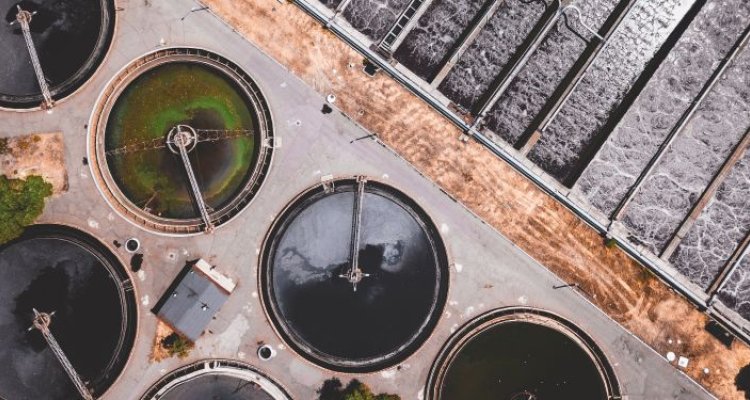
Environmental Technology and Microbiology cluster (ETM)
Our mission is to reduce the human footprint and to safeguard a sustainable supply of water, energy, food and other resources for the world’s growing population. Both fundamental and applied research are of crucial importance to reach this goal. Our approach integrates research on the physiology, ecology, evolution and genetics of microbial biotransformations, and controls their interactions at the ecosystem-, cellular- and molecular level for biotechnological applications. We work on concepts such as microbial fermentation, biocrystallisation, bioavailability, bioretention, biodegradation and bioelectrochemistry to develop technologies that recover carbon, minerals, chemicals, energy and water and remove pollutants from waste and wastewaters to (re-)enter the material cycles.
Composition
- Environmental Technology, with subgroups Environmental Water Technology, Biorecovery and Urban System Engineering
- Microbiology – Sub-groups Microbial Physiology, Molecular Ecology (partly), Microbial Evolution (partly) and Bacterial Genetics (partly)
Research lines
The cluster focusses on fundamental science within the MIB disciplines, linked to fundamental and applied research at ETE in physical, chemical, biotechnological and system engineering disciplines. Together we offer a unique knowledge package, from understanding to application. This interdisciplinary[1] approach results in tangible societal impact through the application of the developed processes, technologies and concepts. Collaborations with other disciplines in the social and environmental sciences, and stakeholder participation and interaction make us a true WIMEK transdisciplinary[2] research cluster.
[1] Interdisciplinary: intensive interaction among disciplines resulting in integrating data, methods, tools, concepts and theories and sometimes creating new methods, concepts or theories (WIMEK 2014, Challenges and successes in interdisciplinary and transdisciplinary research and education). [2] Transdisciplinary: integrating academic knowledge from various disciplines and non-academic knowledge. Throughout the research process academic and non-academic stakeholders are in dialogue (WIMEK 2014).
Two highlights of our research cluster are:
1. Harnessing micropollutant biodegradation for innovative water technologies Since 2009, approximately 20 PhD’s and 5 postdocs at both ETE and MIB research micropollutant behavior and removal mechanisms and develop new bio-, physico-, and nature based technological solutions for micropollutant removal. The internationally recognized fundamental science is regularly further translated into technologies supported by relevant parties in the water sector. New education elements in the Environmental Science programs of WUR were established building on these research outcomes. Future work orients on widening technological solutions and extension to (antibiotic resistant) pathogens.
2. The story of ChainCraft: from discovery to commercial demonstration factory To allow sustainable production of chemicals, organic waste(water) streams represent a prime unexploited feedstock. In spring 2020, ChainCraft B.V. realised the world-wide first commercial demonstration factory to convert organic waste to medium chain fatty acids to be used as feed additive. This result was a direct outcome of an invention done at ETE in 2007 and consequent follow research and entrepreneurial activities.
3. New generation of anaerobic microbiologists - SIAM The Soehngen Institute of Anaerobic Microbiology (SIAM) was established in 2014, and in 2019 renewed for 5 additional years. This program promotes research on anaerobic microbiology and unites world-leading experts in the fields of health, environment and biotechnology to discover new microorganisms and processes for application in a biobased economy. The training and education of young researchers, the next generation of scientific microbiology leaders form the core of SIAM program.
Organisation
The cluster has several areas in which in which cluster members interact for coordination, collaboration, and research and education activities:
- Dedicated interaction in a number of research fields for co-acquisition, co-supervision of PhD and MSc students between ETE and MIB; collaboration is focuses on a number of key overarching themes, namely microbial ecology of pollutant biodegradation, syngas driven chain-elongation, methanogens and bioelectrochemistry, biocrystallization of metals and sulfide.
- Example on Education: PhD courses Stable isotope applications in microbiology and environmental studies (ETE-MIB), Principles of Ecological Genomics (MIB)
- Dedicated group meetings where ETE and MIB researchers interact together (e.g. monthly Environmental Biotechnology meeting, sulphur theme meeting)
- Agreements on collaboration with research facilities including dedicated joint research facilities in large proposals (UNLOCK);
- Social interactions: yearly cluster event with scientific speed dating, poster presentations, and barbeque